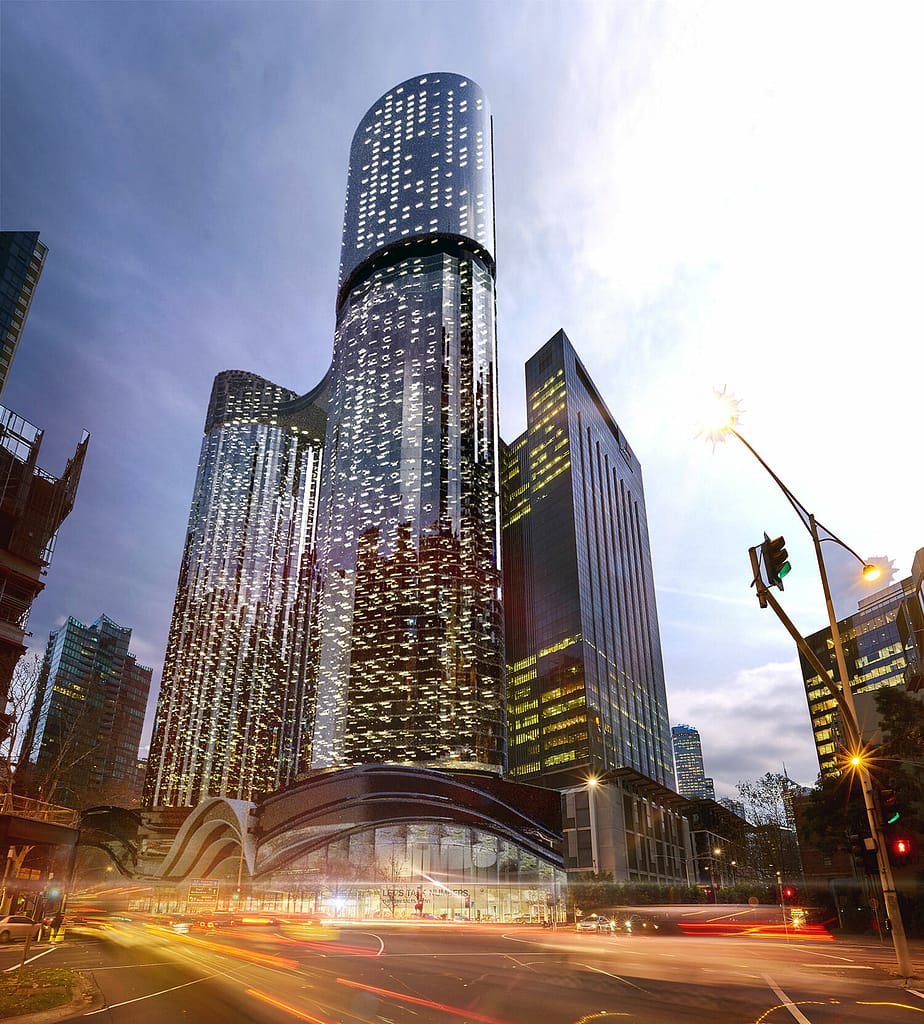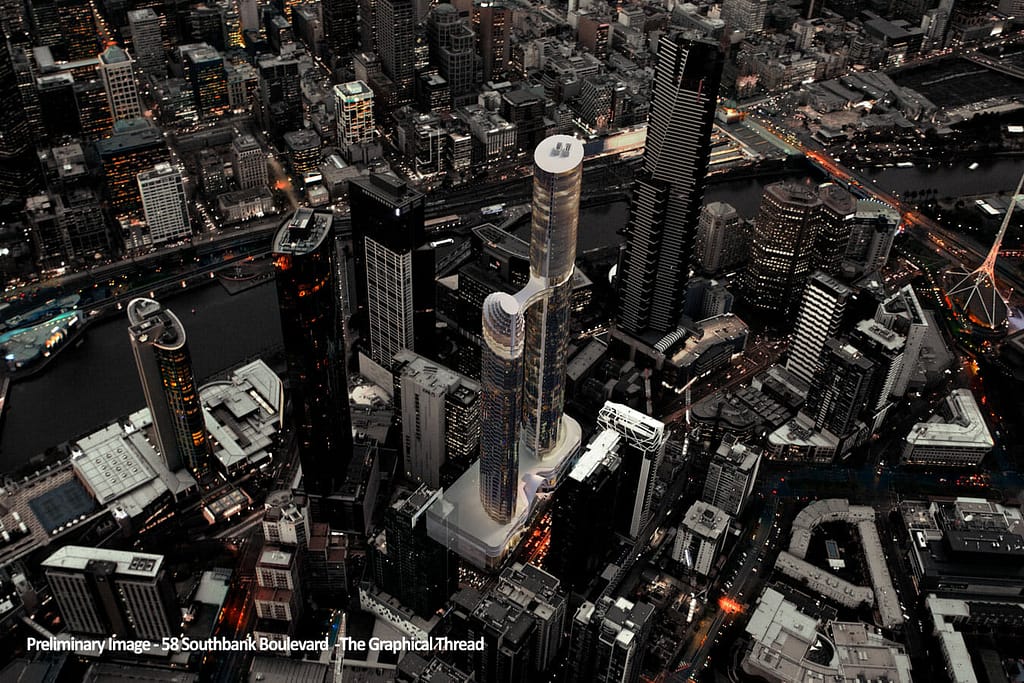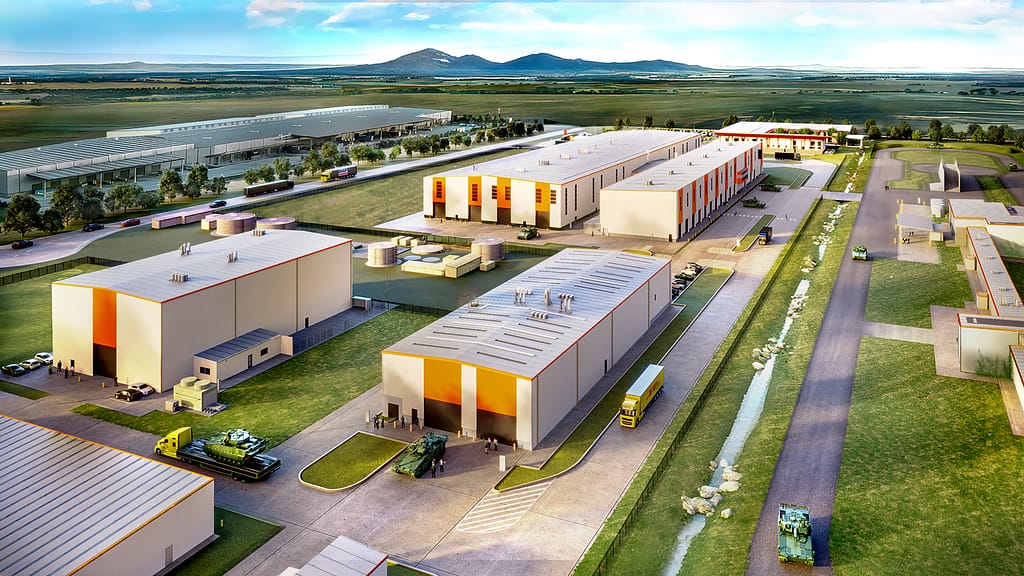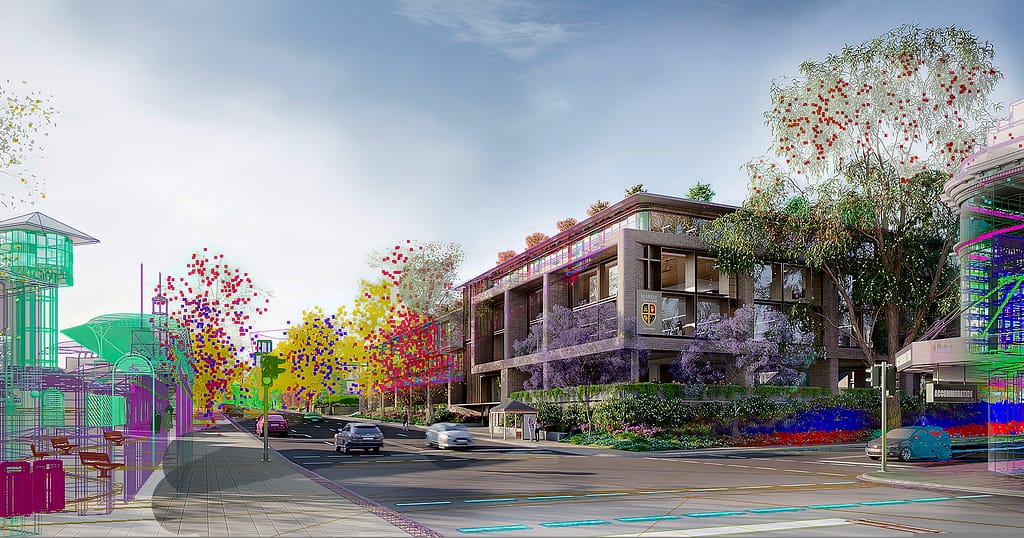58 Southbank Boulevard – The Making of the 3d Render
When The Graphical Thread was asked to produce the 3d marketing imagery for CBRE’s latest project, my first thought was “how are we going make this building shine in one of Melbourne’s densest city blocks?” The site of Flagship, 58 Southbank Boulevard, sometimes referred to as 118 City Road, is located close to Eureka Tower and the under construction Australia 108 building – not to mention the approved One Queensbridge, a Crown Casino 6 star luxury hotel.
However, that was before I saw the concept design from Fender Katsalidis. True to their style, this design mimics 308 Exhibition Street – a collaboration between Cox Architects and Fender Katsalidis. With its glass dual towers set above a podium and a curving sky bridge, this structure is a dream for any architectural visualiser.
But we’re not here to talk about the architecture. I’d like to share with you our process for creating the Flagship, 58 Southbank Boulevard renders.

The brief was for a street view and an aerial view showing the new building in context. Using our Melbourne 3d model and a preliminary model of the proposed new building we began to explore the site and the building within it’s environment.

Next, we looked at setting up some temporary camera views for the aerial view. This would allow us to chose the best view and also brief the drone photographer, detailing the exact location and height required.


Due to the nature of the site location and the strong architectural buildings surrounding the new proposal, it was decided that a helicopter photo would be better suited to fulfill the brief. Below is the original helicopter photo.

The street view photo would be taken from the corner of Southbank Boulevard and City Road. We wanted an evening shot. This would allow us to add movement to the image by showing the car lights streaming though the photo. Below is the original street view photo from ground level.

Next for the photo match and basic textures. For our first draft of images we loosely photomatched our camera and placed our basic lit and simple textured model into the photos.

I always describe this point in the process like creating a painting. Once we have the basic concept started, we can begin to work up the image.



The challenge for the aerial view would be to make the new building shine in an image already bursting with light and glare. To counter act this, most of the saturation was taken out of the photo leaving behind the red light from the cars and street below. This would help detract the viewer from Eureka Tower and other surrounding buildings, without effecting the photo’s drama.


Lights were added into the model to emulate how the other buildings were behaving at that time in the evening.

The heli image just needed some post production to really bring the image to life and ensure that the focus was clearly on the new proposal.

At this point, the images where exactly where I wanted them to be. The grunt work was done. The mood was set and confirmed by the branding agents and the architects. The heli image required some minor tweaks, mostly levels, curves and colour balance adjustments, to finalise the photomontage. The street view image needed a little more attention. Predominantly, the vertical lines from the cameras perspective needed to be corrected and the same applied to the 3d camera.
Once these graphical changes were made to both images, the fun process of material definition and lighting matching could begin. In a nutshell, this involves adjusting both the beauty pass overlaid onto the photo, and the photo itself until the desired result is achieved. The essence of post production.
From this point on, it was simply a matter of liaising with the architect and branding agency until all parties were satisfied with the final result.


I hope you enjoy these images as much as we enjoyed creating them. They are a prominent feature on the official Flagship website, where you can also find out more about the project.
Daragh Doyle. The Graphical Thread.






